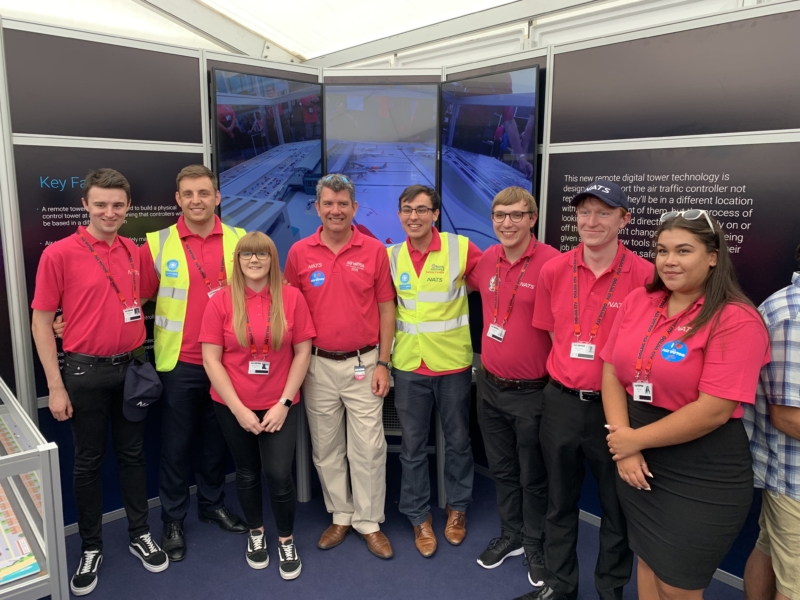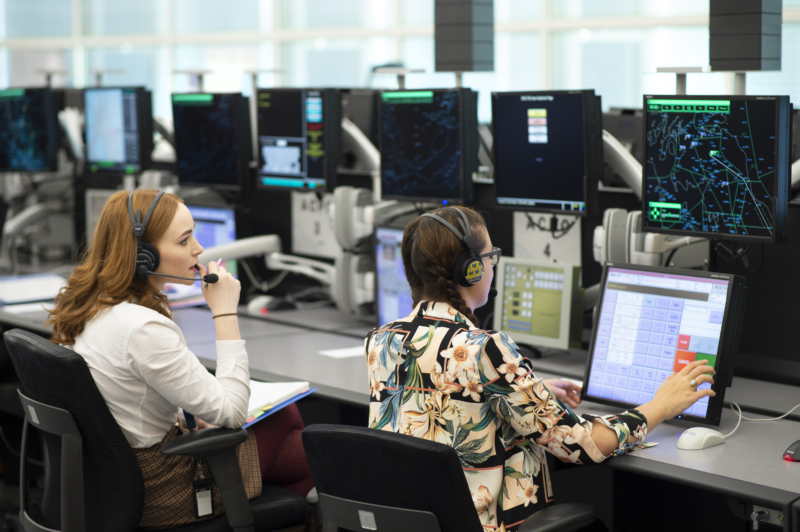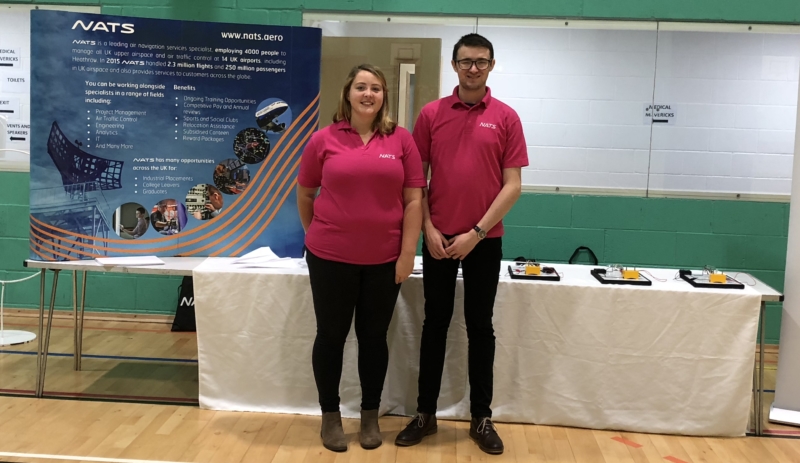How we prepared the Techno Zone at RIAT
9 August 2019Last weekend saw the Royal International Air Tattoo (RIAT) at Fairford deliver another spectacular air show. The event showcased a range of aircraft displays, our standout being the British Airways 747 accompanied by the Red Arrows. As ever, the ATC is provided by volunteers giving up their time, without which the UK’s biggest airshow couldn’t take place. On the ground there was plenty to see and do, with NATS involved in a range of aviation and STEM activities for its visitors.
At each RIAT event, NATS have a stand in the Techno Zone. Here STEM subjects are brought to life to engage and inspire future engineers. As Graduate Project Managers, we were given a development opportunity to design, deliver and manage this year’s stand, focusing on recent NATS achievements and current affairs.
We began the planning process in February where we assembled the core team of six and started devising a wider team which totalled 28 volunteers. We also had to develop our ideas whilst considering logistics, cost and scope.
Our stand consisted of various engaging activities, all of which were tested as much as possible prior the event. We trialled our ideas at the Duxford Airshow, which was a great opportunity to learn what worked well and what could be improved upon in a similar environment to RIAT.

Our final stand design consisted of five activities;
- Our drone game, which lots of visitors said was their favourite part of RIAT, gave the audience an interactive opportunity to gain an understanding of the complexities of drone management within controlled airspace. With a growing number of organisations looking to increase their use of drones in their operations, we wanted to demonstrate the shift in the industry understanding of the need to have more collaboration between manned and unmanned air traffic management
- VR tower experience: NATS get many requests to visit our towers, however we are usually unable to grant these as they are safety critical environments. However, our VR experience allowed visitors to experience what Heathrow control tower is like through virtual reality headsets.
- Our Controller-Pilot activity gave people the opportunity to experience the roles of both an air traffic controller and pilot. The essence of the game is to use compass bearings to vector the aircraft through a designated an airspace corridor via voice communications.
- Model airport’ was a game which allowed visitors to programme a robot using colour codes to get from hangar to take off. This was a small-scale showpiece on how real remote digital tower technology is advancing aerodrome control.
- Our ADS-B activity was the most complex of them all. It demonstrated the use of satellite trilateration to locate an aircraft crossing the North Atlantic. This is then confirmed to the controller through the ADS-B satellite network. It was really great to see people gain a better understanding of how ADS-B worked once they gave it a go. One child completed the game a total of six times before getting his family involved too!


We would like to thank everyone who helped us along our journey and to all who came to visit us on the NATS stand, we hope you enjoyed your experience. Next year we would both like to volunteer and help the future Graduate Project Managers design, deliver and manage the stand, hopefully to improve on our success!
Comments
Please respect our commenting policy and guidelines when posting on this website.




13.08.2019
14:24
Neville Riley
No mention of Sandra Keen who organises and manages the Techno Zone for RIAT all year and is currently working on Techno Zone 2020!!